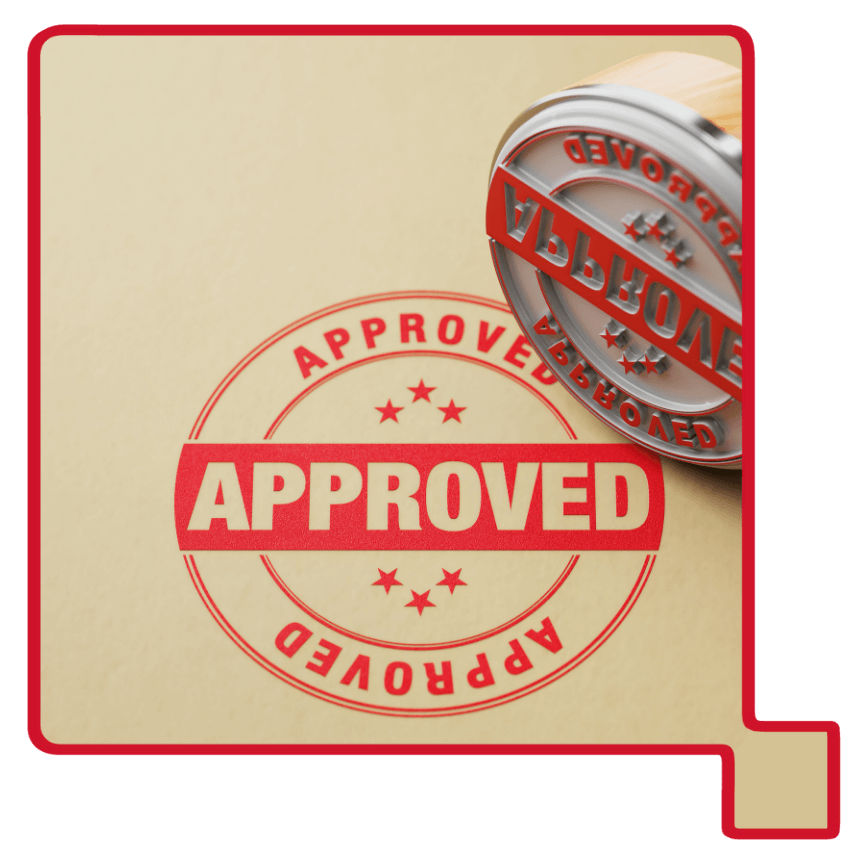- Legal compliance risks
- Goods being rejected at international customs
- Loss of credibility with OEMs or major customers
Common Certification Categories for TTR
Health and Environmental Safety Certifications
These certifications ensure that the ribbon and its materials are safe for use and disposal after printing.
| Name | Stand for | Description |
| MSDS | Safety Data Sheet | Analyzes hazardous properties of materials, required for transport, storage, and use. |
| UL | Underwriters Laboratories | Certifies products are non-flammable and have no electromagnetic impact – essential for industrial use. |
| CA Prop 65 | California Proposition 65 | Lists chemicals known to cause cancer or reproductive harm in California. |
| 6P | 6P Free | Ensures no use of 6 banned phthalates in plastics or printing ink. |
| PFOS/PFOA | PFOS/PFOA | Eliminates fluorocarbon chemicals that harm the environment and human health. |
| MOAH/MOSH | MOAH/MOSH | Ensures no mineral oil aromatic hydrocarbons (MOAH) or saturated hydrocarbons (MOSH), which may be carcinogenic. |
This group is especially important for companies exporting to the EU, USA, or Japan, where consumer health regulations are stringent.
Hazardous Chemical Control Certifications
These standards help identify and restrict hazardous residues in finished ribbons.
| Name | Stand for | Description |
| RoHS | Restriction of Hazardous Substances | Prohibits use of heavy metals like lead, mercury, cadmium, etc. Registration, Evaluation, Authorization of Chemicals |
| REACH | Registration, Evaluation, Authorization of Chemicals | Governs over 1,000 hazardous chemicals in the EU |
| HF | Halogen-Free | Free from chlorine and bromine – toxic when burned |
| TSCA | Toxic Substances Control Act | Requires all chemicals to be registered and reviewed in the U.S. |
| BPA-Free | Bisphenol A Free | Ensures no BPA – an endocrine disruptor, especially important in food labeling |
Industry-Specific Certifications
According to Apple & Samsung's 2023 Supply Chain Sustainability Report:85% of their Tier 1 suppliers require certified print materials.Major OEM customers, global distributors, or large retail chains may add extra requirements, such as:
- Apple Regulated Substances Specification – Controls over 100 hazardous substances, including in labels.
- Samsung Environmental Certification – Examines packaging ink.
- Kärcher (Germany) – Requires durability and safety testing such as:
- Chemical resistance
- Abrasion resistance
- Hardness
- Lightfastness
- Weather resistance
- Adhesion strength
Certifications Required by Industry
Based on Ricoh's customer data, here are the most commonly required certifications per industry:
| Industry | Key Certifications |
| Electronics | RoHS, REACH, HF, UL, Prop 65 |
| Healthcare & Labs | MSDS, MOAH/MOSH, PFOS/PFOA, UL, FDA Compliance |
| Food | MOAH/MOSH, BPA-Free, FDA Compliance |
| Automotive & Heavy Industry | UL, Halogen-Free, TSCA |
| Retail | MSDS, RoHS, FDA Compliance |
Certification Requirements by Market
According to the European Chemicals Agency (ECHA), over 30% of products are rejected at European borders due to labeling that fails to meet chemical and safety standards.
As such, large markets are not just promising—they also have stringent approval processes. Based on Ricoh customer insights, here are common certification requirements by region:
| Market | Commonly Required Certifications |
| Europe (EU) | REACH, RoHS, MOAH/MOSH, HF |
| USA | Prop 65, TSCA, FDA, BPA-Free |
| Japan | PFOS/PFOA Free, MSDS, UL |
Why Certifications Matter for Businesses
- Compliance with international laws and trade: Certifications like RoHS, REACH, and FDA are mandatory for legal product circulation.
- Meeting OEM and distributor demands: Especially in electronics and retail, certifications are critical to winning contracts.
- Protecting end users and avoiding legal risks: Unsafe labels on food or pharmaceuticals can lead to lawsuits and public health issues.
- Enhancing competitiveness and brand reputation: Certified labels help businesses show environmental responsibility and transparency.

Conclusion
Compliance is not optional—it’s the new standard for manufacturing and export.Choosing the right thermal transfer ribbon with full certifications is the first step in a robust labeling solution, helping you:
- Minimize risks
- Optimize long-term costs
- Ensure supply chain continuity
Ricoh’s thermal transfer ribbons are developed with strong attention to international standards and essential certifications.

Contact Ricoh Vietnam now to receive expert consultation on the most suitable certified ribbons for your industry and market needs.

Let’s connect
Get in touch with one of our consultants and find out how we can help you to implement a barcode system
Recommended resources for you

How to Build Collaborative Work Environments for Hybrid Workforces
Unlock the full potential of your workforce. Learn how collaborative solutions can enhance communication, boost productivity, and foster innovation across dispersed teams.

How to Secure Your Digital Workplace from Cyberattacks
Learn how to protect your digital workplace from cyberattacks, safeguarding your data, reputation, and business.

How to Create a Hybrid Workplace That Works
Uncover strategies to build an inclusive hybrid workplace that boosts productivity and engagement.


